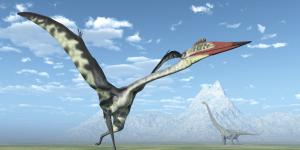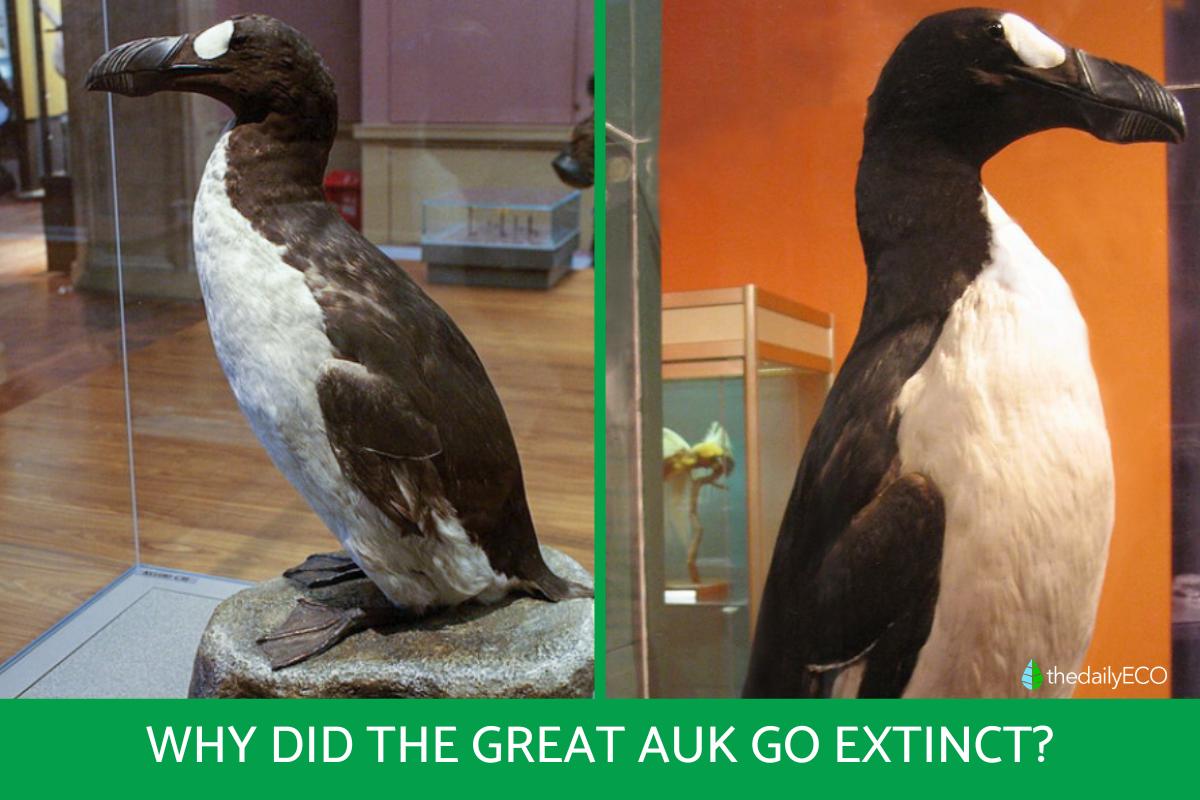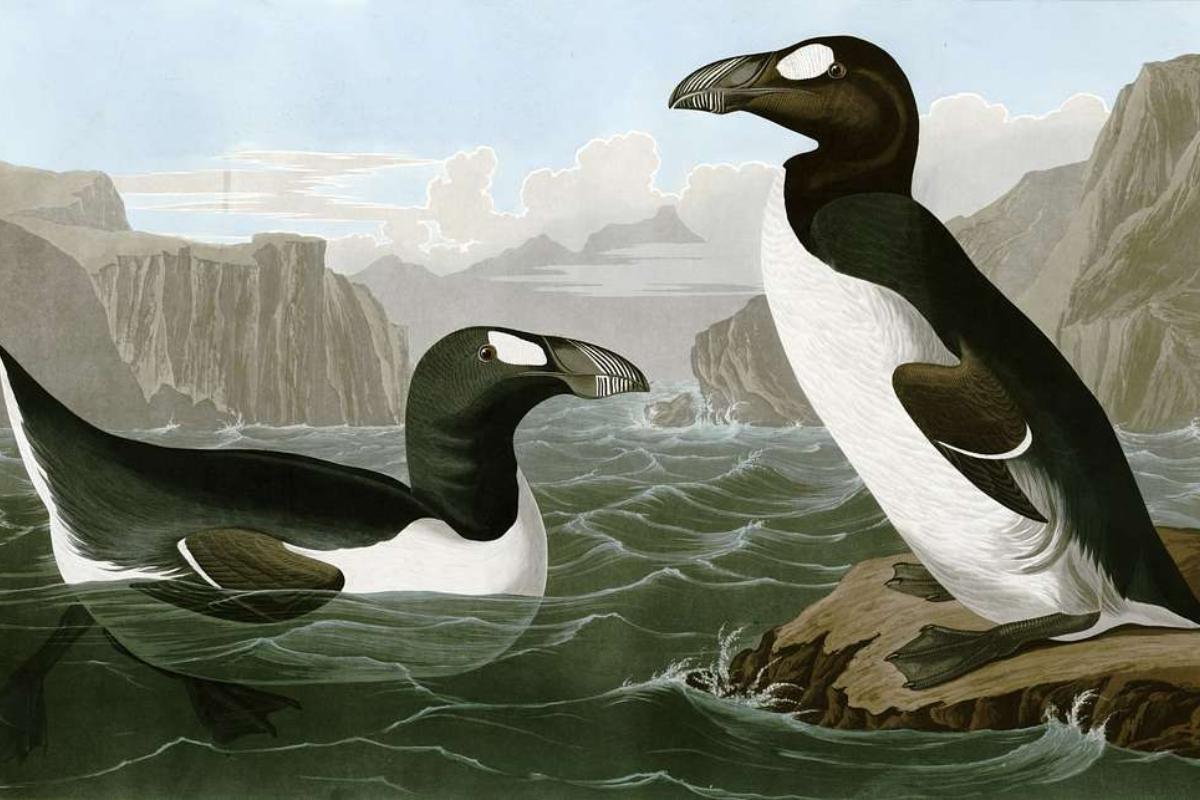Why Did the Great Auk Go Extinct?


The great auk (Pinginus impennis) was a British seabird that had a population distribution that ranged from the top of Spain up through the Atlantic to Greenland. It is now extinct. This extinction occurred leading up to the mid-19th century. There are different factors which contributed to their downfall as a species, but it is generally accepted that the great auk was hunted to extinction. They were prized for their very downy feathers, as well as their meat and eggs. Interference in nesting sites were also a key influence in great auk population decline.
Although they are both flightless birds with similar features, the great auk is not closely related to the penguin. no other members of its genus remains. We learn more about this sad state of affairs at thedailyECO by asking why did the great auk go extinct?
Why did the great auk become extinct?
The great auk was a flightless bird that would walk upright, standing at around 30"/76 cm in height. They fed mainly on fish, but would also eat crustaceans and other animals. They would spend a lot of time in the water, but breed and hatch their eggs on land. The land on which their carried out reproductive activities was very rocky and they mostly lived on remote islands.
Despite their remoteness, they became a staple diet for many human communities. They were hunted not only for their meat, but for their feathers, fat and eggs. Their feathers were used in clothing, bedding and other textiles, being especially useful due to their thermal insulation. Fat was rendered and used for heating and lighting, among other uses of fuel. Eggs were eaten, being collected by egg hunters who saw them as a delicacy.
Since the great auk could not fly, they were particularly vulnerable to hunting. This was not limited to hunting by indigenous peoples. European settlers came to the areas where great auk were endemic, particularly during the period known as the Age of Discovery. During this time, explorers were eager to find new resources, including in the form of birds like the great auk.
By the 17th and 18th centuries, populations were also declining due to intensive hunting. At this time the pressure on the great auk by Europeans shifted towards collection. As there were fewer and fewer auks, catching them became a form of trophy hunting. Unfortunately, this contributed greatly to their extinction.
Another cause that reduced their populations was the typical vulnerability of this species during the nesting phase. These nests were placed on rocks, along the coast, but away from the tide line. This was an adaptation to reduce the risk of the eggs being looted by other animals, achieving this by placing them in difficult-to-access places. There were very few places with abundant food and in rocky areas, making nesting sites scarce.
Habitat destruction also contributed to the rapid decline in population numbers of great auks. Much of this habitat destruction was due to colonization and subsequent human settlements. Coastlines were suitable places to settle, often providing the communities there with better resources than more inland areas.
Both indigenous and settler communities contributed to great auk extinction. However, it is important to note that indigenous communities often had a more sustainable approach to hunting. Similarly important is the fact that European settlers had better technology for hunting and used this type of resource hunting to sell the resultant wares to large European countries.
What was the fate of the last great auk?
By the mid-1500s, some conservation efforts were established. The hunting for feathers was later outlawed in British territories. Unfortunately, such efforts were insufficient to prevent the extinction of the great auks. As the 18th century came to a close and the 19th progressed, the bird was eradicated from territories such as Canada and the Scottish isles.
It is believed the fate of the last great auk was to take place on an island close to Iceland. This island is known as Eldey. It was to Eldey that the last colony of great auks moved after a volcanic explosion submerged a neighboring island.
When the colony on Eldey was discovered, museum hunters wanted specimens for display. All the birds were killed until only two and one egg remained. The adults were strangled to death at the behest of a merchant, with the egg being destroyed during the scuffle to kill the adults. There is also a record of one last great auk found in Newfoundland in 1852. No specimens have been observed since.
Where did the great auk live?
The great auk had marine habits, being well adapted to dominate in coastal ecosystems, they could not fly, but they were incredible swimmers. Their beaks were adapted for catching fish and opening the shells of crustaceans. Although agile in the water, they were quite clumsy on land. This contributed to the ease with which they were hunted.
Populations of great auk were distributed around the North Atlantic, reaching up from northern Spain to as far as Greenland. There were significant populations on the Atlantic coast of Canada, as well as areas such as the aforementioned Iceland. We can say the greatest population densities were in American and Europe
The breeding sites were in Canada, Greenland, the Faroe Islands, Iceland, Ireland and the United Kingdom. They spent their wintering time in southern New England, the United States and southern Spain.

What was the great auk diet?
The great auk managed to dominate the marine environment to meet its nutritional needs, although they would have had natural predators both in water and on land. Their diet was mainly aligned with piscivorous feeding.
- The prey of the adults were fish of approximately 20 centimeters in size. Their favorites were capelins (Mallotus villosus) and Atlantic menhaden (Brevoortia tyrannus).
- Great auk hatchlings and juveniles were not yet trained in fishing skills, so they fed on plankton. They supplemented with fish food ingested and regurgitated by the adult auks.
Description of the great auk
We cannot see what the great auk looks like in the wild, but we do have images. We do not have photos since this medium was in its infancy at the time of the great auk's extinction. The images we have are drawings made when they were alive, as well as preserved specimens which can be found in museums around the world. With this help, we know the great auk had the following characteristics:
- Black back plumage
- White abdominal plumage
- Short wings
- Two legs for standing upright
- White spot under each eye
- Reddish eyes
- Beak curved downwards with a serrated lower jaw
- Hydrodynamic body shape for better swimming
- Stripe on the neck that divides the black head and white belly
- Webbed feet for swimming
- Height from 30-33" (75-85 cm)
- Short neck
The white patch on the eyes changed seasonally. The young great auks also had different plumage.

Importance of the great auk
For the primitive Neanderthal man, the auk provided great nutritional contribution to their diet. This was in the form of both meat and eggs. The great auk was so important to these archaic human settlements that their depictions can be found in cave paintings found in Spain.
Bones and beaks of the great auk were even used for ritualistic burials. Entire garments were made from their skulls, suggesting they were used for protection. In addition to having clothing value, they were used as a symbol for the primitive communities that lived on the sea coasts.
After some millennia, sea travel meant that Europeans were able to travel to areas where great auks proliferated. They were a great indicator for sailors that they had found land since their natural habitat was the coast. When they saw great auk swimming in the sea, they knew they were soon to reach the shore.
Despite the importance of the great auk to man, its exploitation led to its extinction as a species. This leads us to consider that we must make rational use of the natural resources that are still available to us. Preventing the loss of species such as the great auk is important not only to us, but the various ecosystems they inhabit.
Learn more about extinct marine animals with our article which explains whether there were ocean dinosaurs.
If you want to read similar articles to Why Did the Great Auk Go Extinct?, we recommend you visit our Extinct animals category.
- BirdLife International. (2021). Pinguinus impennis. The IUCN Red List of Threatened Species 2021: e.T22694856A205919631. https://dx.doi.org/10.2305/IUCN.UK.2021-3.RLTS.T22694856A205919631.en.
- González Echegaray, J. (1980). The site of the "El Pendo" cave: (excavations 1953-57). Spain: Higher Council for Scientific Research, Spanish Institute of Prehistory.
- BirdLife International. 2021. Pinguinus impennis. The IUCN Red List of Threatened Species 2021: e.T22694856A205919631. https://dx.doi.org/10.2305/IUCN.UK.2021-3.RLTS.T22694856A205919631.en







